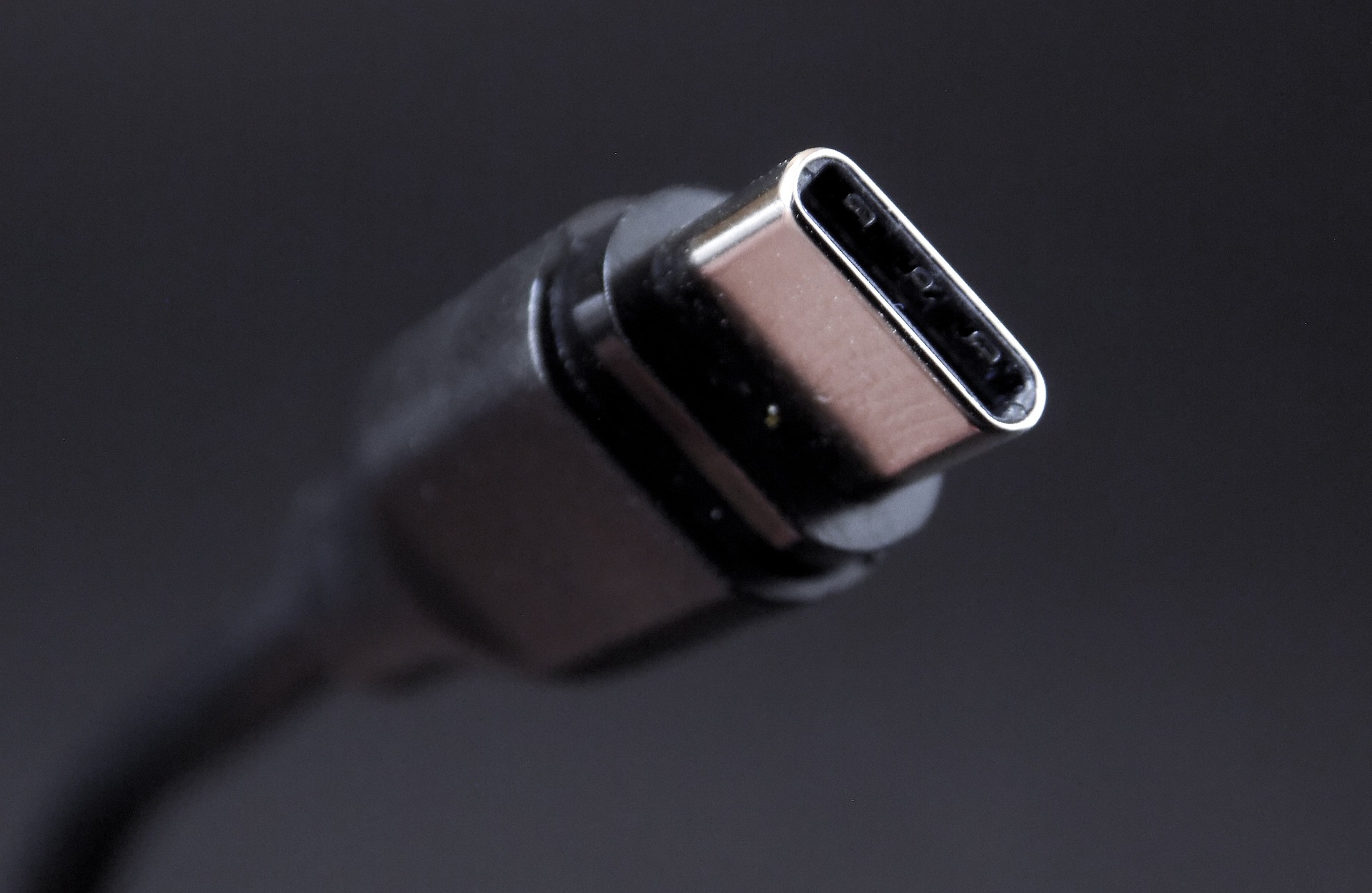USB-C is just a practical plug-in system. You don’t necessarily see which interface with which standard is behind it on the connector. The possibilities are many, and the various designations can be very confusing.
As early as 2014, the USB Implementers Forum published the USB-C plug-in system, but it took a while to catch on. In the meantime, however, not only every new Android smartphone has the practical socket to which cables can no longer be plugged in the wrong way. Current notebooks, PCs and other devices also have at least one USB-C input, and even the iPhones will have the unit port starting with the next generation.
There can be a lot behind USB-C.
However, a USB-C socket does not mean that there is also an interface behind it that utilizes all the possibilities of the new port. The transfer rates that can be achieved or whether an input is also suitable for the power supply or for connecting a monitor can often only be seen in the small print of the manual.
For example, the transfer rates depend on which USB standard is used. USB-C is no longer compatible with USB 1.0, which was introduced in 1996 and only allowed transfer rates of 12 megabits per second (Mbit/s). The oldest supported standard is USB 2.0 from 2001, which allows 480 Mbit/s.
A giant leap was USB 3.0, which was released in 2008. With this standard, the maximum data rate skyrocketed to 5 gigabits per second (Gbit/s), which remained the top speed until 2013. Then came USB 3.1 and the considerable confusion.
It could hardly be more confusing.
That’s because the new standard doubled the transfer rate to 10 Gbps. The USB makers also decided to rename USB 3.0 to USB 3.1 (1st generation) and call the new standard USB 3.1 (2nd generation) for reasons that are hard to understand.
Even more challenging to keep track of was the introduction of USB 3.2 with data rates of up to 20 Gbit/s in 2017. That’s because USB 3.0 became USB 3.2 Gen 1(x1), and USB 3.1 became USB 3.2 Gen 2(x1). The actual USB 3.2 is called USB 3.2 Gen 2×2.
Is everything clear? No. Those responsible also registered this and tried to create clarity with the designations SuperSpeed for data rates up to 5 Gbps, SuperSpeed+ 10 Gbps for maximum speeds of 10 SuperSpeed+ 20 GPS for top transfer rates of 20 Gbps.
This helps as long as manufacturers also label the inputs accordingly. Usually, you will see a logo with “SS” and the maximum speed as a number next to the socket. However, you look for a logo on many devices in vain, and only looking into the manual will help you.
Thunderbolt is also available.
A USB-C port can also be a Thunderbolt port, which a lightning symbol can recognize. The standard developed by Intel and Apple has been using USB-C since version 3. With 40 Gbit/s, Thunderbolt 3 was also the fastest standard on USB-C for a long time until USB 4.0 was released in 2019, which comes to the same maximum speed.
Strictly speaking, USB 4.0 is partly a Thunderbolt 3 descendant, from which it inherited the protocol. USB 4 version 2.0, with a maximum data rate of 80 Gbit/s, has been available since September. In one direction, even up to 120 Gbit/s is possible. Users don’t necessarily notice Thunderbolt and USB differences because the standards are largely compatible.
Intel already gave the starting signal for Thunderbolt 4 two years ago. The maximum speed did not increase with the new standard, but other requirements were tightened. Among other things, the ports must now support a monitor with 8K resolution at a refresh rate of 60 hertz (Hz). Laptops can be charged at up to 100 watts.
One charging cable for everything
Even with a USB protocol, USB-C is not limited to data transfer. Here, the maximum current for charging has increased from 0.1 amperes (A) to 5 A since USB 1.0; the power climbed from 0.5 to 100 watts and the voltage from 5 to 20 volts.
However, a port has to support USB Power Delivery (USB-PD) for this. Otherwise, you will not get more than 15 W on a USB-C port. Whether this is available at a USB-C port can be recognized by a “PD,” a battery symbol or a watt indication, among other things.
USB PD is a different standard, where the power supply and charged device communicate to negotiate the optimal amperage and voltage. With version 3.1 released in 2021, even up to 48 volts and 40 watts will be possible via sophisticated rules.
Displays can also be connected.
As with Thunderbolt, a USB-C port can also be used with USB standards to connect monitors. An alternate mode allows the port to transmit signals other than USB. Thus, USB-C can also be used as a DisplayPort, which allows up to 8K at 60 Hz. HDMI, DVI or VGA connections are also possible via adapters.
Whether a USB-C port supports DisplayPort is indicated by a logo next to the input that consists of a P in a D – provided the manufacturer has applied the label. Of course, USB-C can also transmit audio signals via the alternative mode.
If a USB-C port has the capabilities above, it can be used simultaneously. A laptop can be powered through it while a monitor is connected through the jack, and other data is transferred.
A single USB-C input can be sufficient if you use a hub with multiple inputs. There will probably hardly be any other ports in the future, and the wide USB-A sockets will gradually disappear. In an emergency, there is an adapter to USB-C for almost every plug.
This post has already been read 1649 times!



